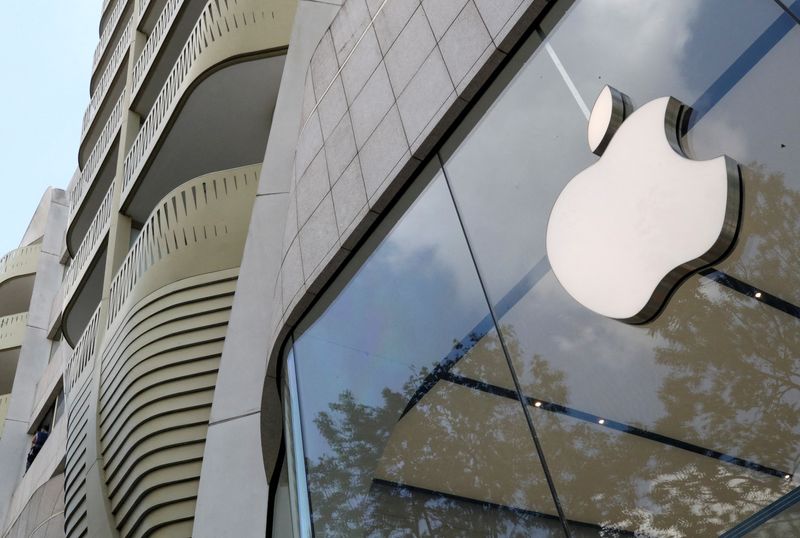By Danielle Kaye
(Reuters) - Apple Inc (NASDAQ:AAPL) navigated pandemic-related supply chain issues better than rivals at the end of 2021, likely helping the iPhone maker surpass Wall Street revenue growth targets of 6%, some analysts estimate.
Apple, which is set to post quarterly earnings on Thursday, was buoyed by strong iPhone 13 sales globally, sales in China and continued growth in Mac shipments, several analysts told Reuters.
The market is closely watching earnings at Apple, Tesla (NASDAQ:TSLA) and other tech companies to see if they quell the sell-off that has wiped out nearly $3 trillion in value from the Nasdaq 100. Investors are dumping tech stocks on fears that the Fed will hike interest rates fairly aggressively and erode the value of their future earnings. Some are concerned that the surge of pandemic at-home tech buying will not last as conditions improve.
"We expect Apple to reach its highest market share in China since Apple entered the market in 2008," said analyst Nicole Peng of Canalys.
Investment firm Wedbush Securities forecasts record iPhone sales of more than 40 million units during the holiday period from Black Friday to Christmas. Morgan Stanley (NYSE:MS) estimates total holiday quarter iPhone shipments at 83 million, representing a 4% increase from the previous year.
Wall Street analysts expect Apple to post about $118.7 billion in revenue, representing 6.48% year-over-year growth, and quarterly earnings per share of $1.89, according to Eikon data as of Tuesday.
Apple posted a rare revenue miss in the fiscal quarter ended Sept. 25, which Chief Executive Tim Cook https://www.reuters.com/technology/apple-results-hit-by-supply-chain-woes-cook-says-holiday-quarter-impact-will-be-2021-10-28 attributed to pandemic-related supply constraints and manufacturing disruptions that together cost the company an estimated $6 billion in sales.
Cook at the time forecast an even bigger drag in the holiday quarter, but analysts expect strong growth compared to competitors in the just-ended quarter, which began days after Apple started shipping the iPhone 13.
"Since Apple has many customized components going into the iPhones, Macs, Apple Watch and others and the scale (volume and price) at which it procures, Apple has been able to lock-in suppliers’ capacities to timely produce those parts with lesser delays," said Neil Shah of Counterpoint Research.
Shah added that Apple is seeing the highest demand for iPhones since the 2015 "supercycle."
Smaller rivals are struggling to keep up with production, leading to Apple market share gains in regions such as China, said Angelo Zino of CFRA Research in a research note.
Apple has said it expects iPads to be its only product with lower sales compared with a year ago due to supply constraints. Analysts say Apple likely prioritized iPhone units for components.
Preliminary holiday quarter data from IDC indicates almost 9% growth in Mac shipments, compared with a 1% rise in the PC market as a whole.
Analysts played down concerns about the impacts of the Omicron variant surge, saying closings of some retail stores did not likely have a big impact on Apple's online-heavy business. Analysts also are watching for signs that rising Omicron cases in China could impact Apple's production.

Apple, the first company worth $3 trillion https://www.reuters.com/markets/europe/apple-gets-closer-3-trillion-market-value-2022-01-03, has been losing value along with the broader stock market. Apple stock has fallen 10% this month and the S&P 500 index has dropped 9%.
Analysts may also ask Apple management about App Store payment rules, after regulators in the Netherlands found that the U.S. company had abused its market dominance https://www.reuters.com/technology/dutch-watchdog-fines-apple-5-mln-euros-failure-comply-app-store-2022-01-24 by requiring dating app developers to exclusively use Apple's in-app payment system.